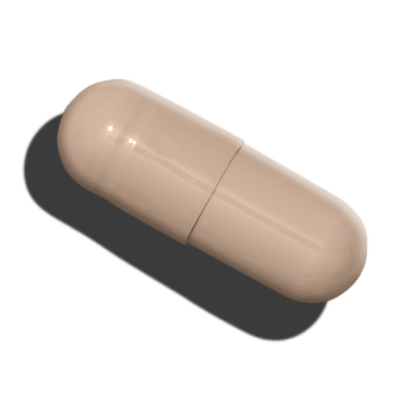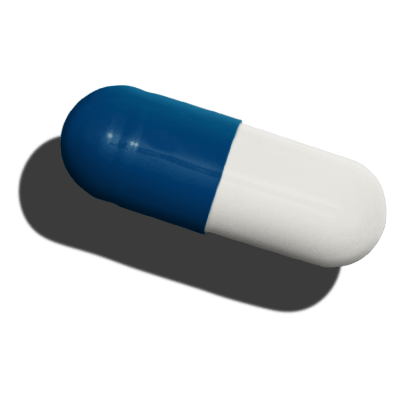Content
Seeking support for your mental health?
Full List of Antidepressants: SSRIs, SNRIs, TCAs & Others

If you’ve been diagnosed with depression, your healthcare provider may have suggested that you use a type of medication called an antidepressant.
Antidepressants are, as their name suggests, medications that help to treat depression. They usually work by changing the balance of chemicals in your brain, called neurotransmitters, that cause the symptoms of depression to develop.
There are many different classes of antidepressants available today, with numerous different medications within each class. As such, it can be quite difficult to tell one antidepressant from another in terms of effects, side effects and general performance.
Content
To make this easier, we’ve listed all of the currently available antidepressants below. Our list includes both modern antidepressants such as SSRIs and SNRIs, as well as a range of older antidepressants that aren’t as widely used today.
For each medication, we’ve included the common brand names you may see it sold under, as well as information about the conditions for which it’s typically prescribed.
We’ve also explained the basics of each type of antidepressant, from potential side effects to the amount of time it may take for a certain class of antidepressant to provide relief from your symptoms.
Selective serotonin reuptake inhibitors, or SSRIs, are the most common type of antidepressant prescribed in the United States.
SSRIs work by increasing the amount of serotonin in your brain. They do this by blocking your brain cells from reabsorbing (or reuptaking) existing serotonin. Serotonin is a key chemical for regulating certain aspects of your mood, including feelings of happiness.
First Developed in the 1970s, SSRIs are a relatively new class of antidepressants. They work well and generally have fewer drug interactions, safety issues and side effects than older antidepressants.
Because of this, it’s common for healthcare professionals to use SSRIs as first-line treatments for depression. Most of the time, SSRIs produce a noticeable improvement in people affected by depression within a few weeks.
If you’ve recently been diagnosed with a form of depression, it’s very likely that your healthcare provider will discuss using an SSRI with you.
In addition to depression, some SSRIs are also prescribed to treat other mental health issues, including anxiety disorders and mood disorders.
Like all antidepressants, SSRIs may cause certain side effects. Our complete guide to SSRIs explains what to expect if you’re prescribed an SSRI, as well as the steps you can take to manage and deal with common side effects.
Related Post: Antidepressants and Alcohol: Can You Drink on Antidepressants?
List of SSRIs
Currently, several different SSRI antidepressants are used to treat depression, anxiety disorders and other conditions. They include:
Citalopram (Celexa®)
Citalopram (sold under the brand name Celexa) is an SSRI used to treat depression. It was first approved in 1998 by the FDA. Citalopram is one of the most commonly prescribed medications in the United States.
Escitalopram (Lexapro®)
Escitalopram (Lexapro) is an SSRI used to treat depression and generalized anxiety disorder in adults. It was approved by the FDA as a treatment for Major Depressive Disorder (MDD) in 2002, then approved in 2002 as a treatment for generalized anxiety disorder.
As with many other SSRIs, escitalopram is one of the most commonly prescribed medications in the United States.
Fluoxetine (Prozac®)
Fluoxetine (Prozac) is an SSRI used to treat depression, obsessive-compulsive disorder (OCD), panic disorder and bulimia nervosa (an eating disorder). It’s also used in combination with other medication to treat depressive episodes in people with bipolar disorder and treatment-resistant depression.
Under the brand name Prozac, fluoxetine was the first SSRI to receive approval from the FDA in the United States in 1987. Today, it remains one of the most widely prescribed medications in the United States.
Fluvoxamine (Luvox®)
Fluvoxamine (Luvox) is an SSRI. Unlike many other SSRIs, which are generally used to treat depression as a first priority, fluvoxamine is typically prescribed to treat obsessive-compulsive disorder (OCD).
In addition to OCD, fluvoxamine may also be prescribed to treat certain anxiety disorders, such as social anxiety disorder. Although it’s less common than other SSRIs, it can be prescribed as an off-label medication to treat depression and as an off-label treatment for post-traumatic stress disorder (PTSD).
Paroxetine (Paxil®)
Paroxetine (Paxil) is an SSRI used to treat depression, obsessive-compulsive disorder (OCD), post-traumatic stress disorder (PTSD) and several anxiety disorders, including social anxiety disorder (SAD), generalized anxiety disorder (GAD) and panic disorder.
It may also be prescribed off-label for other conditions, such as premenstrual dysphoric disorder (PMDD) and premature ejaculation (PE).
Paroxetine was approved by the FDA in 2001. As with other SSRIs, it’s a common medication that’s one of the most widely used prescription drugs in the country.
Sertraline (Zoloft®)
Sertraline (Zoloft) is an SSRI used to treat depression, obsessive-compulsive disorder (OCD), post-traumatic stress disorder (PTSD), premenstrual dysphoric disorder (PMDD) and anxiety disorders such as social anxiety disorder (SAD) and panic disorder.
Like other SSRIs, sertraline is occasionally prescribed off-label to treat other conditions, such as premature ejaculation (PE).
Sertraline was first approved by the FDA for use as a treatment for depression in 1999. As of 2018, not only was sertraline the most common SSRI antidepressant, but also the most widely used psychiatric medication in the United States.
Vilazodone (Viibryd®)
Vilazodone (Viibryd) is an SSRI that’s used to treat depression. It’s a slightly newer medication than other SSRI antidepressants, with the FDA first approving it as a treatment for depression in 2011.
Because of its relatively short amount of time on sale, Vilazodone is less widely used for treating depression than other SSRIs.
Vortioxetine (Trintellix®)
Vortioxetine, sold under the brand name Trintellix, is another newer SSRI that gained its FDA approval in 2013 after completing a rigorous approval process.
Like vilazodone because Trintellix is a newer SSRI on the market, it’s not yet considered a first-line treatment.
Serotonin–norepinephrine reuptake inhibitors, or SNRIs, are a common type of antidepressant used to treat depression, as well as some anxiety and nerve pain disorders.
SNRIs work similarly to SSRIs by blocking the reabsorption of serotonin, increasing the level of serotonin that’s active in your brain and body. In addition, they also block the reabsorption of a different neurotransmitter called norepinephrine.
Like serotonin, low levels of norepinephrine are closely linked to depression symptoms, such as difficulty concentrating, lethargy, and issues related to your sleep-wake cycle.
SNRIs are common medications that are widely prescribed throughout the United States. They are often used to treat depression accompanied by chronic pain.
If you have depression, including depression accompanied by pain, or certain types of anxiety disorder, it’s possible that your healthcare provider may recommend that you use an SNRI to treat your symptoms.
Like other antidepressants, SNRIs can cause side effects. However, the side effects of SNRIs are generally mild and often disappear after several weeks of use.
List of SNRIs
Numerous SNRI antidepressants are currently prescribed to treat depression, as well as other mood disorders. They include:
Desvenlafaxine (Pristiq®)
Desvenlafaxine (Pristiq) is an SNRI antidepressant used as a treatment for depression. It was first approved for use as an antidepressant in 2008. As well as treating depression, it may also be prescribed off-label to treat certain symptoms, such as hot flashes, in menopausal women.
Duloxetine (Cymbalta®)
Duloxetine (Cymbalta) is an SNRI that’s prescribed to treat depression and generalized anxiety disorder. First approved by the FDA in 2004, duloxetine is one of the most widely prescribed medications in the United States.
In addition to depression and anxiety, duloxetine is also approved by the FDA for the treatment of fibromyalgia, chronic musculoskeletal pain and diabetic peripheral neuropathy.
Levomilnacipran (Fetzima®)
Levomilnacipran (Fetzima) is an SNRI used to treat depression. A relatively new medication, it was first approved in 2009by the FDA as a treatment for depression. Unlike the related SNRI milnacipran, levomilnacipran is not approved for use as a treatment for fibromyalgia.
Venlafaxine
Venlafaxine is an SNRI that’s prescribed to treat depression. In its extended-release form, it’s also used to treat numerous anxiety disorders, including generalized anxiety disorder (GAD), social anxiety disorder (SAD) and panic disorder.
Like other SNRIs, venlafaxine may be used off-label to treat other conditions such as diabetic neuropathy, fibromyalgia, complex pain syndromes, premenstrual dysphoric disorder and as a preventive medication for migraines.
It is currently sold under the brand name Effexor® XR. It was previously sold under the name Effexor, but has been discontinued under that name.
Tricyclic Antidepressants (TCAs)
Tricyclic antidepressants, or TCAs, are an older class of antidepressants. They first came onto the market in the mid-20th century as treatments for depression. As well as depression, some tricyclic antidepressants are also used to treat certain anxiety and pain disorders.
Like other antidepressants, tricyclic antidepressants work by increasing the amounts of certain neurotransmitters in your brain, including serotonin and norepinephrine.
As medications for treating depression, tricyclic antidepressants are about equally as effective as SSRIs. However, they’re used much less commonly these days due to their higher risk of causing certain side effects and drug interactions.
Despite this, many people are still prescribed tricyclic antidepressants to treat depression and other conditions.
Tricyclic antidepressants are occasionally used as second-line antidepressants for people who don’t respond well to SSRIs or SNRIs. For some people, they can help to alleviate depression symptoms when other, newer treatments don’t work or cause unwanted side effects.
For others, they’re used off-label as treatments for everything from chronic pain to anxiety. As some tricyclic antidepressants have sedating effects, they may be used off-label as sleep aids for people who struggle with insomnia.
Because of their age, many tricyclic antidepressants are no longer marketed under their original brand names and are instead only available as generic medications.
If you’re prescribed a tricyclic antidepressant, it’s important to be aware of the side effects and potential drug interactions. Our complete guide to tricyclic antidepressants explains how these medications work in more detail, as well as how they should be used safely.
List of Tricyclic Antidepressants
Currently, a variety of tricyclic antidepressants are used to treat depression, anxiety disorders and other conditions. They include:
Desipramine (Norpramin®)
Desipramine is a tricyclic antidepressant that’s prescribed to treat depression. Compared to certain other tricyclic antidepressants, desipramine is slightly less likely to cause certain side effects common to this class of antidepressants.
In addition to depression, desipramine may be prescribed off-label to treat neuropathic pain, bulimia nervosa, irritable bowel syndrome and several other conditions.
Doxepin
Doxepin is a tricyclic antidepressant that’s prescribed to treat depression and certain forms of anxiety. It may also be used off-label to treat other conditions, such as migraines and neuropathic pain.
As well as being prescribed as an antidepressant, doxepin is approved for use as a sleeping pill (at much lower doses than used for depression) and is commonly sold under the brand name Silenor®. It has also been sold under the brand name Sinequan®, but was discontinued.
Imipramine (Tofranil®)
Imipramine (Tofranil) is a tricyclic antidepressant that’s used as a treatment for depression. It’s occasionally used as a second-line medication to treat depression with melancholic and atypical features, as well as to treat bedwetting in children. It may also be used off-label for panic disorder and neuropathic pain.
Nortriptyline (Pamelor®)
Nortriptyline (Pamelor) is another tricyclic antidepressant used to treat depression. It may also be prescribed off-label as a treatment for chronic pain, myofascial pain, orofacial pain, diabetic neuropathy and postherpetic neuralgia, a potential complication of shingles.
Protriptyline
Protriptyline is a tricyclic antidepressant prescribed for depression. It’s also used to treat certain forms of anxiety, as well as headaches and attention deficit hyperactivity disorder (ADHD).
Protriptyline may also be prescribed off-label for treatment-resistant depression, sleep apnea, cocaine dependence, as a local anaesthetic and as a support medication for people trying to quit smoking.
It was previously sold under the brand name Vivactil®, but has since been discontinued. However, protriptyline is still available and sold as a generic.
Tetracyclic Antidepressants (TeCAs)
Tetracyclic antidepressants are another older class of antidepressants. They were introduced in the 1970s and 1980s and work similarly to tricyclic antidepressants. Tetracyclic antidepressants are often referred to as “atypical” antidepressants.
Like other antidepressants, tetracyclic antidepressants work by increasing the levels of certain neurotransmitters (including serotonin and norepineprhine) affected in people with depression or anxiety disorders.
While they’re less commonly used for depression than newer antidepressants such as SSRIs and SNRIs, some tetracyclic antidepressants are used to treat people who have depression at the same time as issues such as anxiety or difficulty sleeping.
List of Tetracyclic Antidepressants
Numerous tetracyclic antidepressants are used to treat depression and other conditions. They include:
Mirtazapine (Remeron®)
Mirtazapine (Remeron) is a tetracyclic antidepressant that’s used to treat depression. It’s also used off-label as a treatment for a variety of conditions, including insomnia, anxiety disorders, headaches and migraines.
Monoamine Oxidase Inhibitors (MAOIs)
Monoamine oxidase inhibitors, or MAOIs, are another older class of antidepressants. They were first introduced in the 1950s and, like other older antidepressants, generally aren’t prescribed as first-line treatments for depression today due to their risk of side effects and drug interactions.
MAOIs work by blocking the enzyme monoamine oxidase, which breaks down neurotransmitters such as serotonin, norepinephrine, dopamine and tyramine. By stopping these chemicals from being broken down, MAOIs help to increase these neurotransmitter levels.
Although MAOIs are effective, they have a considerable risk of interacting with both medications and certain foods. For example, MAOIs can interact with foods that contain tyramine, potentially causing a sudden, life-threatening increase in blood pressure.
Because of this, people who use MAOIs need to carefully monitor not just their use of different medications, but also their diet.
Today, MAOIs are rarely used except in certain circumstances, such as when other medications for depression aren’t effective. We’ve explained more about how they work, their potential side effects, interactions and more in our complete guide to MAOIs.
List of Monoamine Oxidase Inhibitors
Although MAOIs typically aren’t a first-line treatment for depression today, several medications in this class are still prescribed to treat certain forms of depression and other conditions. They include:
Phenelzine (Nardil®)
Phenelzine (Nardil) is a MAOI that’s prescribed to treat depression. It may also be used off-label as a treatment for treatment-resistant depression, social anxiety disorder and panic disorder. It may also be used to treat certain anxiety disorders, such as panic disorder and phobias.
Isocarboxazid (Marplan®)
Isocarboxazid (Marplan) is an MAOI that’s used to treat depression, particularly depression in people who haven’t shown improvement with other antidepressants.
Selegiline (Emsam®)
Selegiline (Emsam) is an MAOI transdermal patch that’s prescribed to treat depression. Some other brand names for selegiline (Eldepryl® and Zelapar®) have been used as a combination therapy with the drugs levodopa and carbidopa in the management of Parkinson's disease symptoms.
Tranylcypromine (Parnate®)
Tranylcypromine (Parnate) is an MAOI that’s prescribed to treat depression in people who have not responded to other treatments. It may also be used off-label for treatment-resistant anxiety disorders, including social anxiety disorder and panic disorder.
Other Antidepressants
Some antidepressants don’t fit clearly into the drug classes listed above. Medications like this may be referred to as “atypical” antidepressants. Several medications are considered atypical antidepressants, including some that are commonly used to treat depression.
Bupropion
Bupropion (currently sold under the brand names Wellbutrin® SR, Wellbutrin XL)) is an atypical antidepressant that’s often used to treat depression and seasonal affective disorder.
It’s also approved as a smoking cessation medication, for which it’s sold under the brand name Zyban®.
In some cases, bupropion may be used off-label to treat sexual dysfunction caused by other antidepressants.
Trazodone (Desyrel®)
Trazodone, sold under the brand name Desyrel, is another popular antidepressant used to treat MDD in adults.
Like some of the other medications on this list, trazodone is sometimes prescribed off-label to help people with insomnia.
Esketamine (Spravato®)
Unlike most antidepressant medications, esketamine, sold under the brand name Spravato, is a nasal spray antidepressant.
Approved by the FDA to treat treatment-resistant depression, as well as the symptoms of MDD in adults, it can only be taken under the supervision of a healthcare professional, and is used only under particular conditions.
Other Atypical Antidepressants
Other atypical antidepressants, such as nefazodone, opipramol, agomelatine and others, may be used to treat certain forms of depression but are either discontinued or not approved in the United States.
Get Help if You’re Feeling Depressed
If you’re feeling depressed, it’s essential that you get the help you need. Our mental health resources provide effective strategies from licensed therapists that you can use to understand, recognize and help alleviate the symptoms of depression and anxiety.
If you’d like to talk to a professional, you can also talk to a licensed psychiatry provider online via video chat. You’ll receive a personalized treatment plan and, if appropriate, medication to help you treat your symptoms and take control of your mental health.
Editorial Standards
Hims & Hers has strict sourcing guidelines to ensure our content is accurate and current. We rely on peer-reviewed studies, academic research institutions, and medical associations. We strive to use primary sources and refrain from using tertiary references. See a mistake? Let us know at blog@forhims.com!
This article is for informational purposes only and does not constitute medical advice. The information contained herein is not a substitute for and should never be relied upon for professional medical advice. Always talk to your doctor about the risks and benefits of any treatment. Learn more about our editorial standards here.
Mary Lucas, RN
Mary is an accomplished emergency and trauma RN with more than 10 years of healthcare experience.
As a data scientist with a Masters degree in Health Informatics and Data Analytics from Boston University, Mary uses healthcare data to inform individual and public health efforts.




